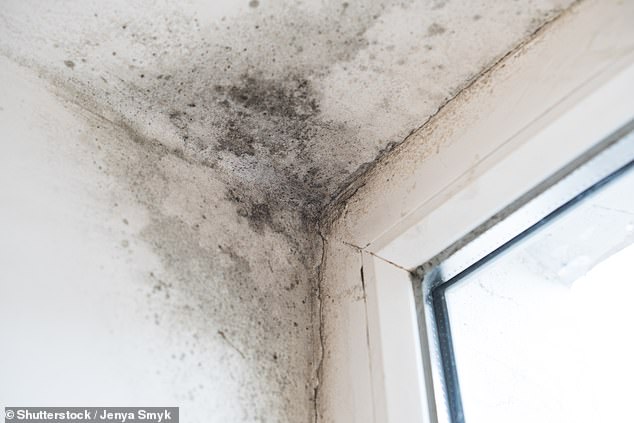
Scientist Warns: Never Dry Laundry Indoors and How to Hang It Correctly
Stop Drying Clothes Indoors—It Could Harm Your Health
(600 words | Images included)
We all dread laundry day, but did you know drying clothes indoors could be dangerous? Dr. Rebecca Drummond, an immunology expert at the University of Birmingham, warns that using drying racks in poorly ventilated spaces promotes mould growth, which poses serious health risks. Here’s what you need to know.
The Mould Menace
Mould thrives in damp environments, releasing spores that can trigger respiratory issues, allergies, or even infections. Indoors, it appears as black or green patches on walls and emits a musty odor. For most people, occasional exposure isn’t harmful, but prolonged contact can be deadly.

Mould thrives in damp indoor environments, often appearing on walls or ceilings (stock image).
High-Risk Groups
People with weakened immune systems, lung conditions (e.g., asthma, COPD), or infants like Awaab Ishak—a toddler who died in 2020 from mould exposure in his home—are particularly vulnerable. Fungal spores can invade lungs, causing blockages or infections. Dr. Drummond highlights Awaab’s case as a tragic example, which led to “Awaab’s Law” in the UK, requiring landlords to address dampness promptly.

Drying clothes indoors increases indoor humidity, creating ideal conditions for mould (stock image).
Why Indoor Drying Is Risky
Hanging wet laundry indoors releases moisture into the air, raising humidity levels by up to 30%. In winter, when windows stay closed, spores accumulate, worsening air quality. Even healthy individuals risk respiratory irritation or allergic reactions from prolonged exposure.
The Right Way to Dry Clothes
1. Outdoors Year-Round
Brave the cold! Outdoor drying eliminates moisture and kills bacteria via sunlight. If weather allows, it’s the safest method.

Outdoor drying prevents mould growth and uses natural UV light to sanitize clothes (stock image).
2. Use a Dehumidifier or Heated Rack
No outdoor space? Invest in a dehumidifier to extract moisture or a heated drying rack. Both reduce dampness and speed up drying.
3. Improve Ventilation
Open windows or use exhaust fans while drying clothes. Avoid overcrowding racks to allow air circulation.
Preventing Mould in Your Home
- Fix leaks promptly.
- Clean mould with diluted bleach or specialized products.
- Monitor humidity (ideally below 50%) with a hygrometer.
Final Takeaway
Mould is preventable. Prioritize ventilation, dry clothes outdoors when possible, and consider tools like dehumidifiers to protect your health. As Dr. Drummond stresses: “Damp homes aren’t just uncomfortable—they’re dangerous.”
Key Image Captions (if placed in order):
- Mould Growth: Close-up of mould on walls (explains risks).
- Indoor Drying: Clothes on a rack in a cramped room (highlights poor practice).
- Outdoor Solution: Sunny clothesline (promotes safer alternative).
Stay dry, stay safe!


